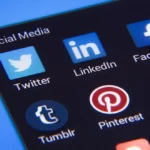Hello there! As a writer deeply immersed in the world of branding, I’ve spent countless hours exploring the nuances of brand voice and its impact on customer relationships. Today, I want to share my experiences with you, focusing on how understanding psychographics – that is, the psychological attributes of your audience – can lead to rock-solid brand loyalty and fervent advocacy.
The Power of Psychographic Profiling: Beyond Demographics
For years, marketing relied heavily on demographics: age, location, income. While valuable, these factors paint an incomplete picture. Psychographics, however, dives deeper. It explores values, attitudes, interests, and lifestyles. Think of it this way: demographics tell you who your customer is, psychographics tell you why they buy.
My initial attempts at brand voice development were decent, but they lacked… resonance. They didn’t truly connect with the audience on an emotional level. That’s when I realised I needed to move beyond surface-level information and embrace psychographic profiling.
Imagine you’re selling outdoor gear. A demographic approach might target ‘men aged 25-45, earning £40,000+’. A psychographic approach, however, would identify segments like ‘eco-conscious adventurers who value sustainability and ethical sourcing’ or ‘thrill-seeking adrenaline junkies who prioritise performance and cutting-edge technology’. Suddenly, your messaging becomes far more targeted and impactful.
Building Deeper Connections: Emotional Drivers and Brand Values
This is where the magic happens. Understanding your audience’s emotional drivers allows you to align your brand values with their personal beliefs. For instance, if you’re targeting that ‘eco-conscious adventurer’ segment, highlighting your sustainable manufacturing processes, charitable partnerships, and eco-friendly packaging will resonate deeply. On the other hand, the ‘thrill-seeking adrenaline junkie’ segment will respond better to content showcasing extreme sports athletes using your gear, highlighting its durability and performance in challenging conditions.
Tailoring Your Brand Voice: Tone, Language, and Style
Once you’ve identified your key psychographic profiles, the next step is to tailor your brand voice. This involves adjusting your tone, language, and overall communication style to match their preferences.
Consider these examples:
-
Luxury Brand (Targeting Affluent, Status-Conscious Individuals): The tone might be sophisticated, elegant, and exclusive. The language would be refined, using sophisticated vocabulary and subtle humour. The style would be polished, emphasising heritage, craftsmanship, and attention to detail.
-
Sustainable Fashion Brand (Targeting Environmentally Conscious Consumers): The tone would be authentic, transparent, and passionate. The language would be clear, honest, and informative, avoiding jargon. The style would be approachable, focusing on storytelling and showcasing the brand’s commitment to sustainability.
-
Tech Startup (Targeting Innovative, Early Adopters): The tone would be energetic, innovative, and forward-thinking. The language would be modern, using industry-specific terminology and playful humour. The style would be cutting-edge, emphasising the brand’s disruptive nature and technological advancements.
I’ve found brand voice guides invaluable in this process. They provide a framework for defining your brand’s personality, values, and key messaging pillars. You can adapt these guides to your specific audience profiles, ensuring that your communication remains consistent and authentic across all channels. Many are available free online and it is worth taking a look and getting a feel for what makes the brands voice so appealing.
Strengthened Loyalty and Advocacy: The Payoff
When you consistently communicate in a way that resonates with your audience on an emotional level, you build stronger relationships. Customers feel understood, valued, and connected to your brand. This leads to increased brand loyalty and advocacy.
Loyal customers are more likely to make repeat purchases, recommend your brand to others, and forgive occasional mistakes. Brand advocates, on the other hand, are your most valuable marketing asset. They actively promote your brand to their networks, creating a positive word-of-mouth effect that can significantly boost your brand reputation and drive sales.
When I started implementing these psychographic-driven strategies, I saw a noticeable shift in customer engagement. Comments became more passionate, social media interactions increased, and sales conversions improved. It was clear that customers were responding to the authentic and relatable voice we had crafted.
Building a strong brand isn’t just about products and services; it’s about creating a connection with your audience. Understanding their values and motivations and aligning your brand voice accordingly allows you to forge lasting relationships that lead to both commercial success and a community of loyal followers.











